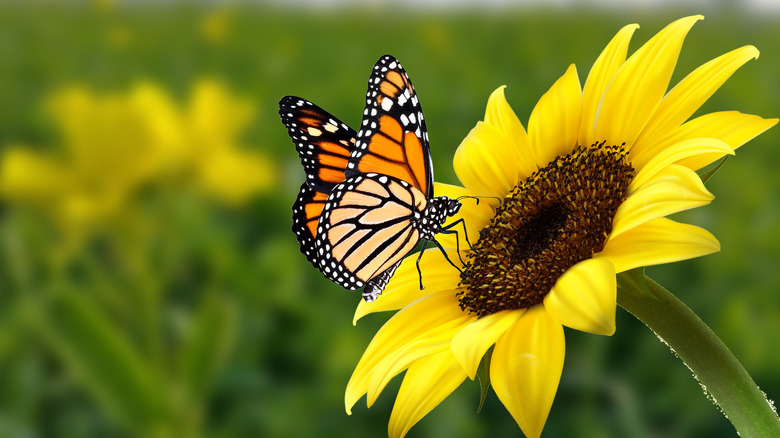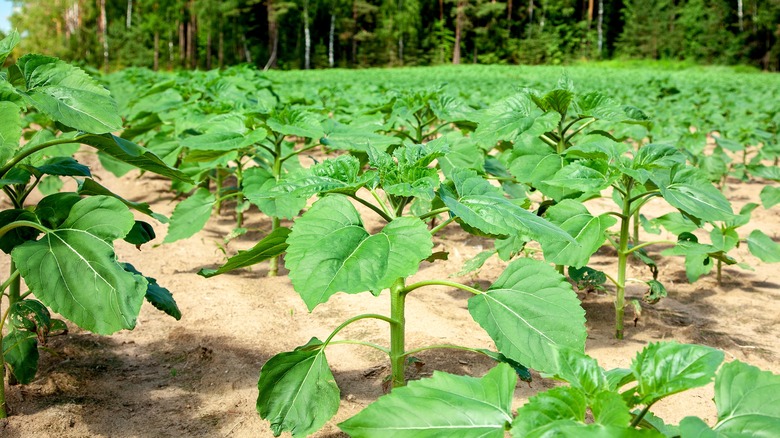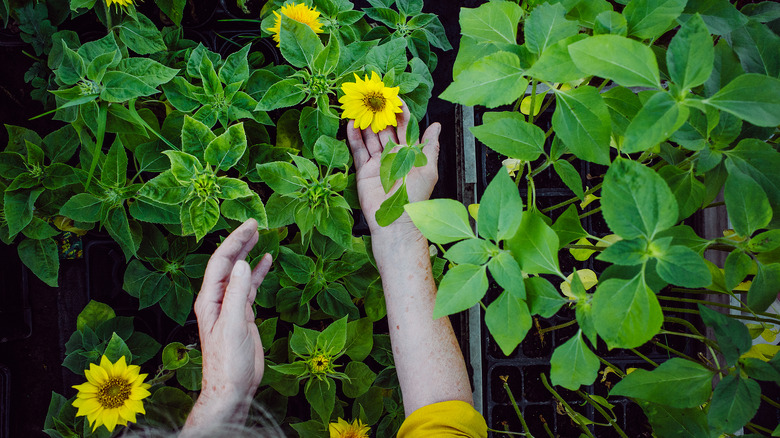Sunflowers are one of the most well-loved garden flowers. They’re beautiful, easy to grow, and produce nutritious seeds and oil. True to their name, the one growing condition crucial for sunflowers is the sun. Without at least six hours of direct sunlight per day, sunflowers will not bloom. So, the best spot in your garden for growing sunflowers is one that is very sunny.
Sunflowers aren’t too fussy about soil, as long as they have ample sunlight and regular watering. They love bright summer sunshine, so if you’re deciding between a spot with morning or afternoon sun, the afternoon sun will provide a stronger sunlight situation for them to grow. Something else to keep in mind when choosing a spot: the seeds of these flowers are well-loved by birds and other wildlife, such as squirrels and chipmunks. Some gardeners will even cut off the flower heads once the blooms start to fade and put them on the ground to give birds easier access.
How much space a sunflower needs

Sunflowers come in many different varieties and in a range of sizes and colors. The more sun exposure they get, the more likely they will reach their maximum height. To choose the best spot for planting sunflower seeds, consider how much space they need. Some varieties, such as mammoth, can grow up to 10 feet tall! These massive flowers also get a thick stem that’s up to 3 inches in diameter, so they need to be planted about 18 inches apart.
However, there are other shorter varieties, such as the cheery, pale yellow lemon queen, which grows to an average of 5 to 7 feet tall. These may not grow as tall, but they still need at least 18 to 24 inches of space for the root systems to develop. There are also dwarf sunflowers, like teddy, which have bright, fuzzy, solid yellow petals and grow to a maximum height of 4 to 5 feet. This variety will also require at least 18 inches of distance between each seed. Once you determine that you have enough room for your sunflowers to grow to their maximum height, plant your seeds, water them regularly, and wait for the flowers to appear. Once the seeds are planted, it takes between 80 to 120 days for the full-grown flowers to bloom.
How to transplant sunflowers that spring up in shady spots

Sometimes, sunflower seeds can land in areas we wish they had not. The seeds that come with bags of birdseed tend to germinate well, and if you have these in your bird feeder in early spring, they tend to fall on the ground. Birds will almost certainly manage to drop them in various places, where they may start to grow. Usually, these seeds are black oil sunflowers, an open-pollinated variety grown for agricultural purposes. They’re very vigorous and tend to germinate very easily.
If you see sunflower seedlings appear in shady spots or in other places in your garden where they’re not wanted, they can be transplanted to a more suitable location. You’ll need to wait until they are at least 3 inches tall. Then dig them up gently, move the seedlings to in a sunny place, and water them well at the roots at least once a day for a few days until they’re well established.



